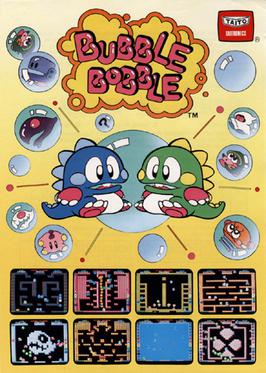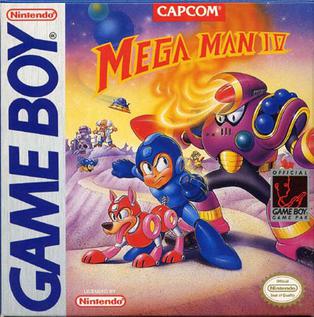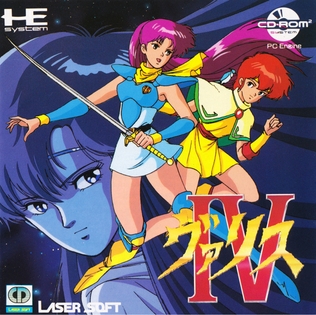
Bubble Bobble is a 1986 platform game developed and published by Taito for arcades. It was distributed in the United States by Romstar, and in Europe by Electrocoin. Players control Bub and Bob, two dragons that set out to save their girlfriends from a world known as the Cave of Monsters. In each level, Bub and Bob must defeat each enemy present by trapping them in bubbles and popping, who turn into bonus items when they hit the ground. There are 100 levels total, each becoming progressively more difficult.

Darius II is a 1989 arcade video game developed by Taito. It is the direct sequel to the 1987 Darius. It was later released as Sagaia in Japan in 1991 for the Game Boy as well as non-Japanese ports. A remake was released for the PC Engine Super CD-ROM² as Super Darius II in 1993.

The NewZealand Story is a platformer arcade game developed and published by Taito in 1988. The game's concept and setting were inspired by a holiday trip in New Zealand by one of the Taito programmers. The player controls Tiki (ティキ), a kiwi who must save his girlfriend Phee Phee (ピューピュー) and several of his other kiwi chick friends who have been kidnapped by a large blue leopard seal. While avoiding enemies, the player has to navigate a scrolling maze-like level, at the end of which they release one of Tiki's kiwi chick friends trapped in a cage. In 2007, the arcade game received a remake for the Nintendo DS under the title New Zealand Story Revolution.

Nekketsu Kōha Kunio-kun, released as Renegade in the West, is a beat 'em up video game developed by Technōs Japan and distributed by Taito for the arcades in 1986. In the original Japanese version Nekketsu Kōha Kunio-kun, the game revolves around a high-school delinquent named Kunio-kun who must stand up against a series of rival gangs frequently targeting his classmate Hiroshi. In the Western version Renegade, the player controls a street brawler who must face four different gangs in order to rescue his girlfriend being held captive by a mob boss.

Nanostray is a vertically scrolling shooter for the Nintendo DS. The user takes control of a futuristic spacecraft against a horde of enemies. A sequel, Nanostray 2, was released in 2008.
Thin Chen Enterprise, also known as Sachen, was a Taiwanese company that developed several original games for the NES, Mega Drive, Game Boy and other early cartridge-based handheld systems such as the Watara Supervision and Mega Duck. With the exception of the latter two handhelds, all of Thin Chen's games were produced without license from the console manufacturers. The company produced at least 70 unique games for the NES and Famicom and at least 32 for the Game Boy, making it the most prolific unlicensed developer and publisher for both consoles. The company also produced its own Nintendo Entertainment System hardware clones, such as the Q-Boy.

Mega Man IV is an action-platform video game by Capcom for the Nintendo Game Boy. It is the fourth installment in the handheld version of the Mega Man series. The game continues the quest of the protagonist Mega Man in the struggle with his long-time nemesis Dr. Wily, who sends out a disruptive radio signal to cause a rampage, citywide destruction from dormant robots. Mega Man IV features the traditional action platforming gameplay of the prior games while introducing one new feature, the ability to purchase items with power-ups found throughout each stage. As with previous Game Boy releases, the game incorporates gameplay elements and bosses from two sequential Nintendo Entertainment System (NES) games: Mega Man 4 and Mega Man 5. The game has received a warm critical reception. In 2013, Mega Man IV was made available on the Virtual Console of Japan's Nintendo eShop for the Nintendo 3DS. It was later released in the North American and PAL region eShops the following year.

Demon Sword is an action video game developed by TOSE and published by Taito in 1989 for the Nintendo Entertainment System.

Double Dragon is a 1987 beat 'em up video game developed by Technōs Japan and distributed by Taito for arcades across Asia, North America and Europe. It is the first title in the Double Dragon franchise. The game's development was led by Yoshihisa Kishimoto, and it is a spiritual and technological successor to Technos' earlier beat 'em up, Nekketsu Kōha Kunio-kun (1986), released outside of Japan by Taito as Renegade; Kishimoto originally envisioned it as a direct sequel and part of the Kunio-kun series, before making it a new game with a different cast and setting.

Lufia & the Fortress of Doom, known as Estpolis Denki in Japan, is a role-playing video game developed by Neverland and published by Taito in 1993, for the Super Nintendo Entertainment System. It is the first title in the Lufia series of video games and the only game from the series released under the Taito label in North America.
Darius is a shoot 'em up video game franchise developed and published by Taito. The eponymous first game was released in February 1987 for arcades, and has since been followed by six sequels and several spin-offs. The series takes place during the events of a war between humans and the Belsar empire, which plot to destroy all that is left of mankind. Darius is known for its branching stage paths, upbeat soundtrack, and cute sea life-inspired enemies.

Remindelight is an action role-playing video game developed by Japan Art Media and published by Taito for the Nintendo DS on September 28, 2006 in Japan. The player controls four characters with different abilities, navigating an overworld and fighting enemies using the D-pad, touchscreen and microphone. The story sees the four player characters seeking to restore the scattered pieces of the ripped-apart Book of Happiness, and bring happiness back to the world. Reviewers at Famitsu enjoyed the battle system, calling it innovative and saying that it made good use of the Nintendo DS hardware.

Valis IV is a 1991 action-platform video game originally developed by Laser Soft and published by Telenet Japan for the PC Engine CD-ROM². A vastly different version titled Super Valis IV was published in Japan by Telenet in 1992 and in North America by Atlus Software in 1993 for the Super Nintendo Entertainment System. It is the fourth and final main entry in the eponymous series. Following on the events of Valis III, Yuko became a goddess and has watched over Vecanti since Glames' defeat. The dark world prince Galgear, who lost self-control after acquiring a magical ring, broke from his fifteen-year imprisonment by the gods of Vecanti, kidnapping Valna and being pursued by troops led by Cham. Lena, a member of Cham's band, is joined by her sister Amu and the prince's father Asfal on a journey to retrieve the titular sword and defeat Galgear.

MStar Semiconductor, Inc. was a Taiwanese fabless semiconductor company specializing in mixed-mode integrated circuit technologies, based in Hsinchu Hsien. MStar made hardware for multimedia and wireless communications, in the form of display ICs and mixed-mode ASIC/IPs, in addition to chip sets for GSM mobile handsets. MStar employed approx. 1300 in more than 10 branches worldwide. The company's revenue was around US$1067 million in 2010. The growth has been substantial, their revenue in 2005 was US$175 million. MStar is listed on the Taiwan Stock Exchange under the code 3697.

Holtek Semiconductor is a Taiwan-based semiconductor design centre and provider with its headquarters and design operations based in the Hsinchu Science Park in Taiwan, and has sales offices located in USA and India. Holtek's design focus is in both 32-bit and 8-bit along with Touch microcontroller development, and as of 2022 the firm employed 631 employees. Holtek also designs and provides peripheral semiconductor products such as remote control, telecommunication, power management, computer peripheral, and memory devices. Holtek's device application area is concentrated in the consumer product field such as household appliances, computer peripheral products, remote controllers, leisure products, medical equipment as well as industrial controllers. Holtek microcontrollers are in home appliances including brands such as Philips, Siemens, Märklin and Japanese brands such as Futaba and Sony.

The Flintstones: The Rescue of Dino & Hoppy is a 1991 platform video game by Taito for the Nintendo Entertainment System and based on the animated series The Flintstones. Taito would later release another Flintstones game for the NES titled The Flintstones: Surprise at Dinosaur Peak in 1994.

Magang (Group) Holding Co., Ltd., or known as Masteel Group, is one of the major Chinese iron and steel enterprises. Since 2019, it is a joint venture of central government owned China Baowu Steel Group and Anhui Provincial People's Government's State-owned Assets Supervision and Administration Commission (SASAC). It is headquartered in Ma'anshan, Anhui province. The group produced iron and steel via its listed subsidiary Maanshan Iron and Steel Company Limited, which was a listed company since 1993. However, the group had a significant part remained unlisted.

The Flintstones: The Surprise at Dinosaur Peak is a platform game for the Nintendo Entertainment System released by Taito in 1994. The game was never released in Japan unlike its predecessor The Flintstones: The Rescue of Dino & Hoppy.
Hualien Media International Co., Ltd. is a global entertainment company based in Taipei, Taiwan. Co-invested by Taroko textile Corporation, Showtime Cinema, and Ambassador Theatres. Operations which encompass motion pictures/television/new media productions, acquisitions and distributions. artists representation and theme parks development.
Royalstar or Rongshida is a Chinese brand of home appliances owned by the Hefei State-owned Assets Management Holdings Co., Ltd, a branch of Hefei State-owned Assets Supervision and Administration Commission (SASAC).
















